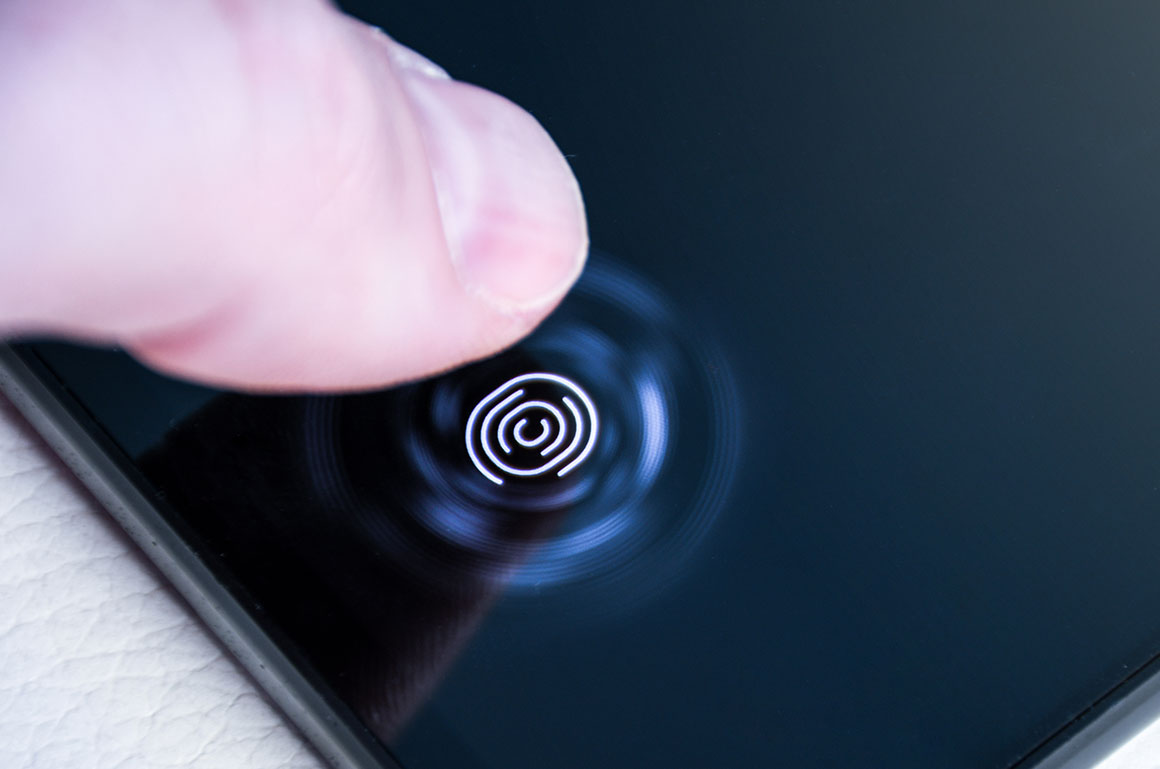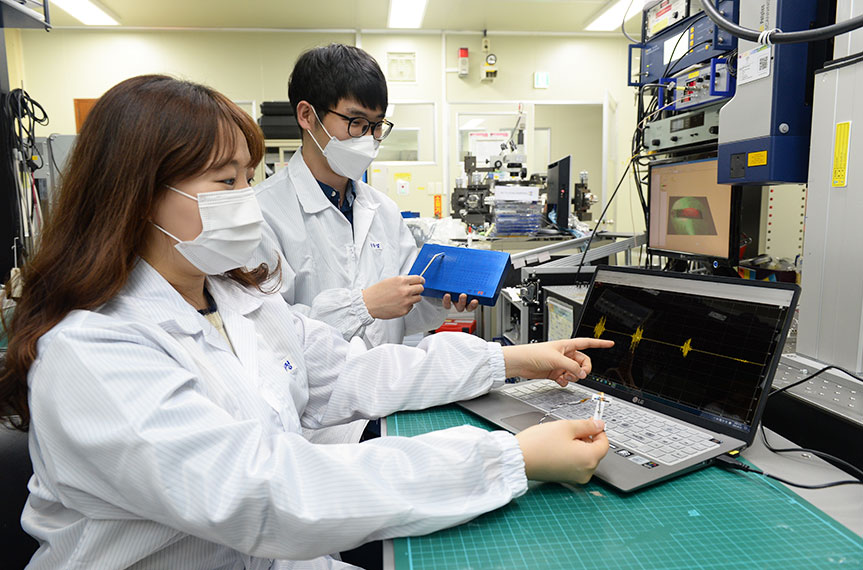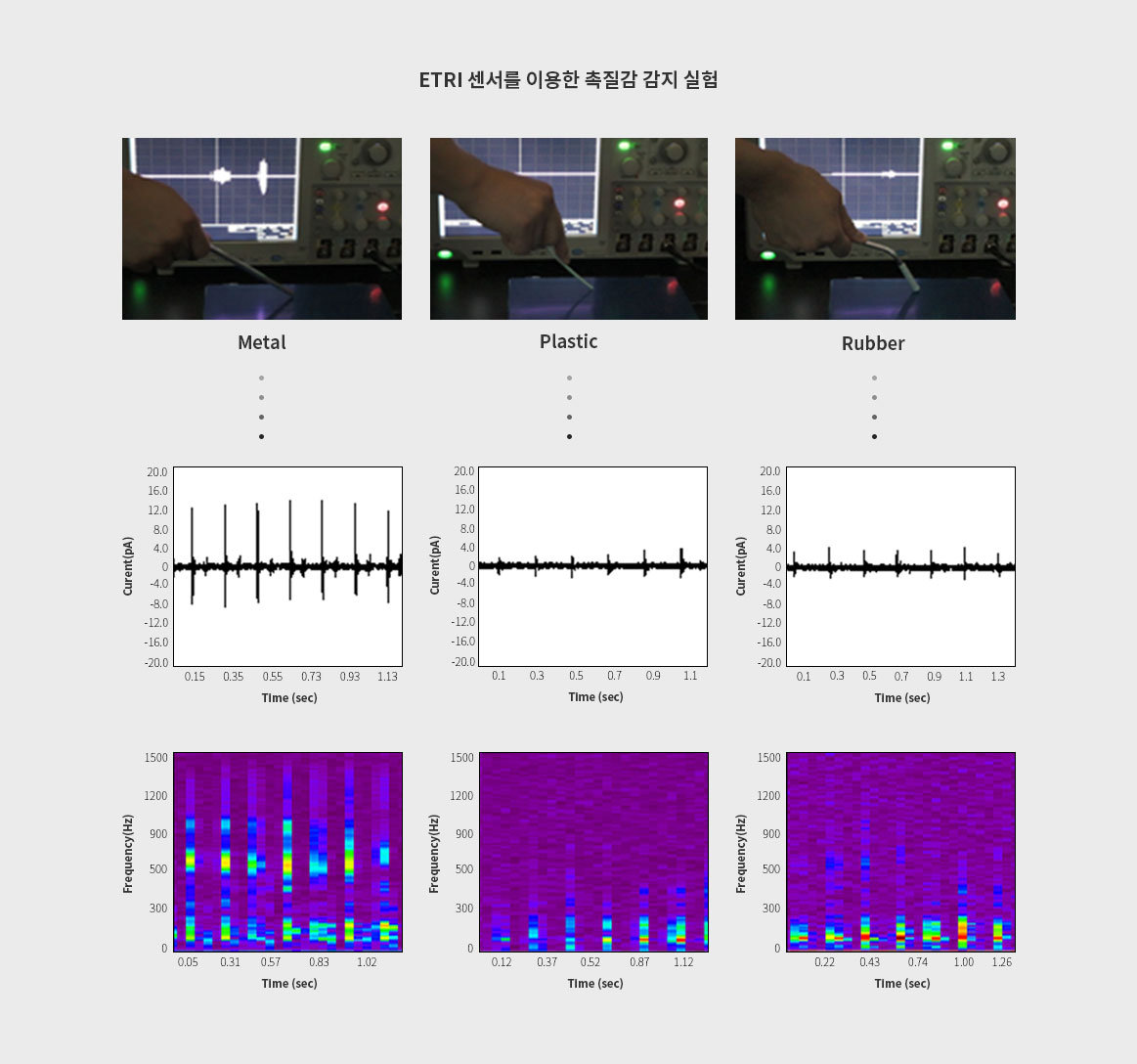VOL. 65 June 2021
ETRI Develops Tele-haptic System
for Communicating Tactile Sensations
- Touch, texture, and sound can be transmitted simultaneously by up to 97% through the sensor
- Contribute to localization of the materials, components, and equipment industries
by developing top-quality piezoelectric materials

The Korean research team developed the haptic technology that enables touching and feeling the objects remotely. The team further delivered the successful development of core material-based technology, which have relied on foreign technologies, showing significant performance expected to emerge as the leader in the next-generation haptic1) field.
The Electronics and Telecommunications Research Institute (ETRI) announced that the piezoelectric material2) was developed to maximize immersion in VR (virtual reality) and AR (augmented reality), and the next-generation tele-haptic technology was provided through the sensor and actuator3).
ETRI's tele-haptic technology was introduced last month through Advanced Functional Materials4), the world’s top prestigious journal in the field of materials.
The research team revealed that they succeeded in developing the technology of feeling the texture of metal, plastic, or rubber remotely from up to 15m by using tele-haptic technology. In other words, when the material is scratched from far away, the user can feel whether the material is hard, rough, or smooth.
The research team also disclosed that they would take on the challenge of developing the technology for stroking a pet dog in Korea from the USA to feel the soft feeling of the fur.
1) Haptic: Interface technology of interacting with the user through tactile sensation. Tele-haptic is remote and virtual technology for feeling the sense of touch dynamically as if in reality
2) Piezoelectric Material: Material that generates electricity when applied with force, and shows a deformation effect when applied with electricity
3) Actuator: Device for operating the machine by using power
4) Advanced Functional Materials: The world’s top prestigious journal in the field of materials (IF: 16.836) introduced the haptic actuator technology for the VR/AR (Recent advances and opportunities of active materials for haptic technologies in virtual and augmented reality, https://doi.org/10.1002/adfm.202008831)

An elaborate integration of multiple sensors and actuators through bilateral communication is required to achieve high quality of haptic sensation delivery from a remote site. The research team used Bluetooth communication in the laboratory and explained that the acquired and reproduced signals matched up to 97%. Especially, there is almost no delay in the transmission process of the haptic data signals to feel the sensation in real-time.
The ETRI research team implemented the haptic communication of exchanging even sophisticated tactile sensation. The haptic information is collected through the sensor, and the actuator duplicates and reproduces with the same sensation using the collected information.
The piezoelectric sensor5) developed by the research team is expected to contribute greatly to overcome the challenges in the materials, components, and equipment industries. According to the research team, the world’s top-class performance of the piezoelectric material was achieved with higher flexibility compared to the traditional ceramic and polymer piezoelectric materials.
ETRI also mentioned that this result was possible due to the original technology for the sensor and actuator developed for over ten years by the research team. Especially, the piezoelectric actuator was applied with the multi-morph6) structure to secure large output and displacement characteristics exceeding the existing simple laminated ceramic structure, resulting in up to 11 times’ displacement improvement. The fast response, large output, and displacement characteristics of the piezoelectric actuator are the key factors in enabling the realistic reproduction of the haptic sensation.
5) High piezoelectric composite material-based flexible piezoelectric pressure sensor
6) Multi-morph Method: Method of having the polarization directions of the upper and lower layers of the multilayered piezoelectric material opposite to maximize the displacement

In addition, the research team explained that they printed the piezoelectric composite film measuring approximately 30㎛ on top of the flexible substrate to develop the piezoelectric sensor performed with patterning of up to 13 channels (partition), and various piezoelectric actuators at least 1mm in size were produced in an array for vivid reproduction of the haptic data collected from the sensor. This is also convenient to create a large area for applying to the laptop computer and tablet PC in the future.
Along with the position that is tapped or pressed through the patterned piezoelectric sensor/actuator, haptic information such as roughness and friction of the surface, etc. can also be transmitted appropriately. The vibration of the piezoelectric actuator can be felt precisely by placing the hand and is strong enough to make the nut placed on the top bounce off.
Especially, this technology can be applied to transmit remotely not only the haptic sensation but also the texture and sound. The research team transmitted the letters “E, T, R, I” through Morse Code, successfully demonstrating the remote transmission of the message.
Due to the nature of the piezoelectric material, there is also the advantage of responding quickly enough even with low power without human recognition, and of producing instantaneous voltage7) of 100V or higher without the external power due to the electric charge generated by bending or pressing.
The research team pointed out that the core technologies of this technology include the ▲highly flexible piezoelectric composite sensor, ▲high-power multi-morph piezoelectric actuator, ▲piezoelectric sensor & ctuator signal processing and operation, and ▲composite haptic data control and wireless communication interface technology, etc.
7) Instantaneous voltage (1ms or less) of 100V or higher produced. 1ms is 1 sec. of 1,000 min.

“Tele-haptic technology for VR/AR lets you feel the texture of the products without visiting the store. ETRI will continue to upgrade the performance of the piezoelectric materials and components for utilizing the technology in the rehabilitation of disabled people and Metaverse, etc.,” said Hye Jin Kim, director of the ETRI Intelligent Sensor Research Section.
The research team added that the combination, process, and structural design in the piezoelectric material technology would be sophisticated to enhance the accuracy of data collection and output, and ETRI will continue to strive for securing technical competitiveness in the tele-haptic field in advance.
This research was conducted as the “Development of High Piezoelectric Coefficient Composite and Ultra-Low Power Multilayered Piezoelectric Sensor/Actuator Multi-functional Module” by the Ministry of Science & ICT (MSIT), supervised by ETRI, and performed jointly with Professor Tae-Heon Yang of the Korea National University of Transportation and Professor Jin Ryong Kim of The University of Texas at Dallas.
The ETRI research team succeeded in technology transfer and commercialization for seven products such as ultra-thin piezoelectric speakers, etc. related to this technology, and the haptic communication technology was demonstrated through linkage with sensor and actuator in the “Nano Korea” held last year.

